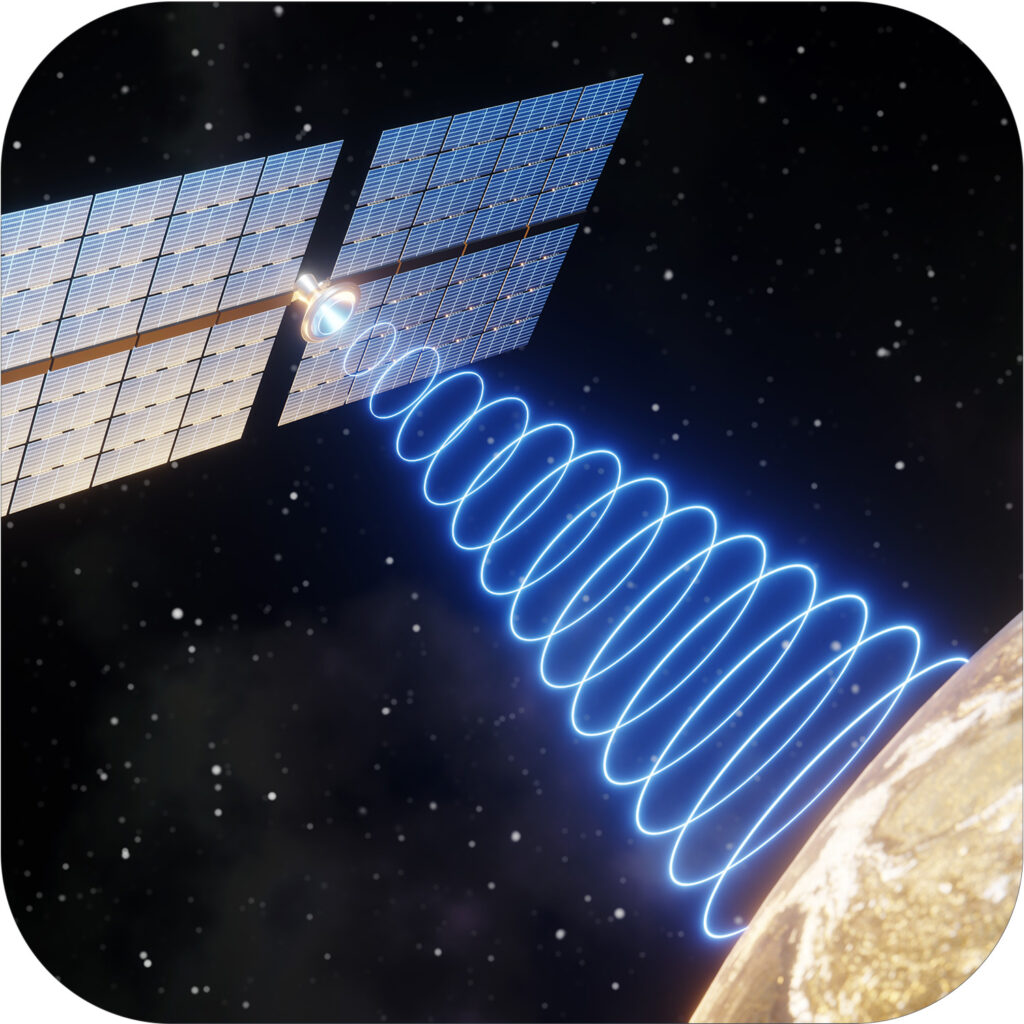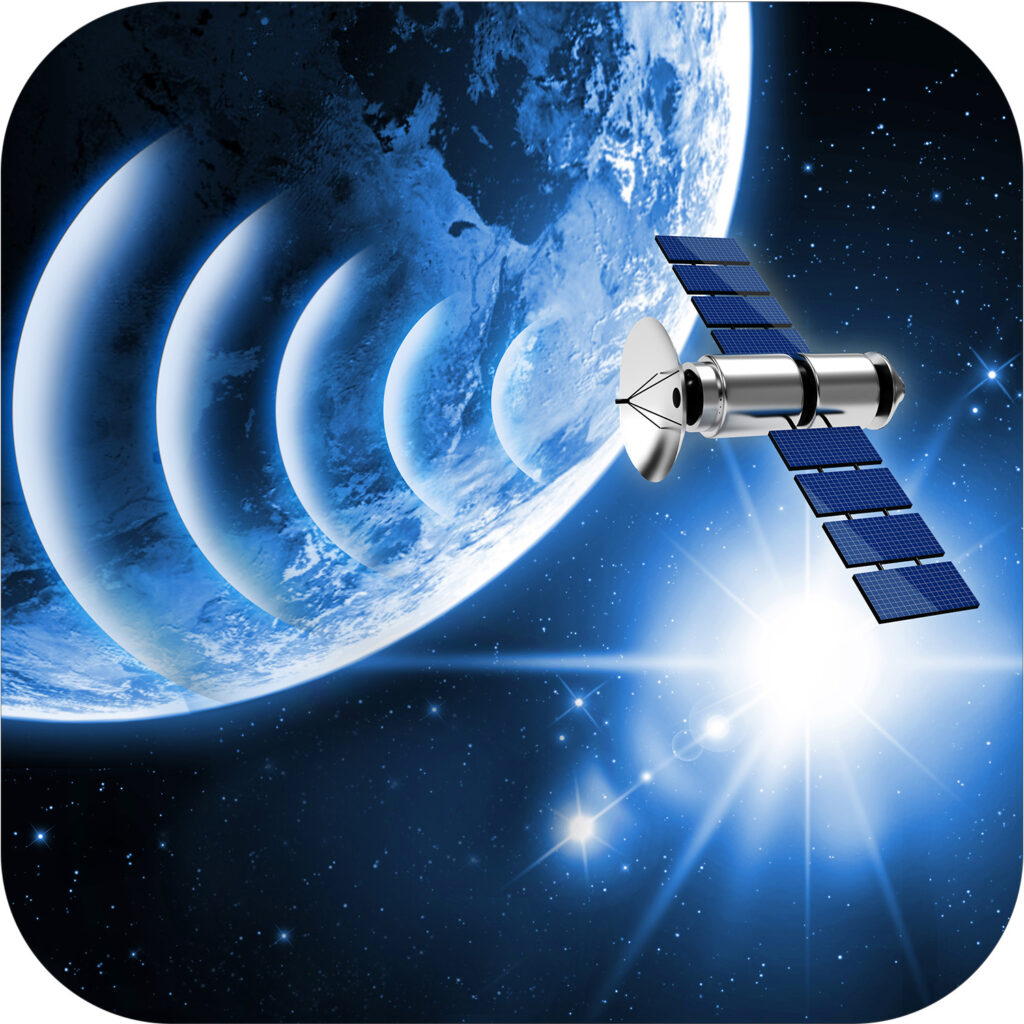Photo credit: charunwit- stock.adobe.com
Microwave-based transmission could enable space-based solar panels to send 24/7 solar energy to base stations on Earth.
Solar energy has become a critical contributor in our efforts to transition to carbon-free electricity generation. But the issue of intermittency—the fact the sun isn’t always shining—remains a challenge for utilities seeking to balance supply and demand across their wires 24 hours a day. So, some researchers are now looking to space where, despite its seeming infinite darkness, the sun is always shining. But transmitting that energy safely and efficiently to Earth is no small challenge.
That’s why these investigators are studying ways solar energy could be transmitted wirelessly to Earth-based receivers, potentially providing access to 24/7 solar supplies. The actual implementation of this technology is likely decades off, but some governments and technology developers see the possibility of gigawatt-scale space-based power plants as soon as 2050. There is also the possibility of nearer-term use for similar power-beaming capabilities in terrestrial applications. These include delivering power to remote locations without building out expensive transmission infrastructure.
There’s no question that solar energy’s contribution to U.S. electricity supplies has grown considerably over the last decade. In 2023, utility-scale solar comprised about 3.9% of the nation’s total electricity capacity from utility-scale sources, according to the U.S. Energy Information Administration (EIA). And by 2025, the agency forecasts U.S. utility-scale solar capacity will grow by another 75%. But, with that growth comes a greater need to support demand during cloudy weather and overnight hours.
These limitations have scientists dusting off nearly 50-year-old research for ways to access solar resources that could act like baseload generators. This idea of capturing the sun’s rays from space began as a possible commercial spinoff from NASA’s space race, and attention grew during the 1970s oil crisis that followed. In fact, power-beaming records achieved in 1975, when Raytheon and NASA used ground-to-ground beaming to send 34 kilowatts (kW) over 1.5 kilometers, have yet to be beaten.
The technology itself can sound a bit like a science fiction tale—and, in fact, J.D. Readle, an EPRI researcher studying this technology (which is called “directed energy” or “power beaming”) says an Isaac Asimov short story, “Reason,” published in 1941, has been an inspiration for his work in the field.
“A lot of my career so far has been in the field of directed energy—mostly for military uses, although there are a lot of other applications, as well,” he said. “When the opportunity came up to get involved in helping this research, that was really exciting.”
As Readle explained, the line diagram describing how space-based solar power (SBSP) would work is fairly simple and would begin with a photovoltaic (PV) solar array likely stationed in geosynchronous orbit, allowing it to remain aligned with an Earth-based receiving station. The DC power produced in the PV panels would be fed to a large transmitting antenna array that would convert the energy into microwaves and direct it to a receiving array, where it would be converted back to DC and then to AC power for delivery to the grid.
As imagined, though, there’s a lot of complexity buried in this description, beginning with the cost of launching the space-based equipment into space, especially given the size needed to generate the amount of power that would make the effort worthwhile. And the Earth-based receiving station also has significant size requirements.
“When we think about satellites, we might think about small satellites, taking the power in and converting it and sending it to where you need it,” said Poorvi Patel, manager of strategic insight in EPRI’s Technology Innovation program, noting that actual requirements are significantly larger. “It’s not like five-by-five meters. It’s more like kilometers that we’re talking about.”
Many Research Threads
As Readle explained, the size requirements for both the space-based array and transmission system and the Earth-based rectifying antenna (or “rectenna”) are driven by physics and the assumption that microwaves are the best choice for power transmission. “There are always tradeoffs—for example, you could have much smaller arrays if you use optical frequencies like lasers,” he said. “But one of the things that makes it challenging to use laser wavelengths is they tend to lose more energy when propagating through the atmosphere, especially if it’s rainy or cloudy. Microwaves can have lower atmospheric losses, so there are efficiency advantages, but they require much bigger apertures.”
Readle said there is also more to be learned about the DC-to-microwave conversion process and the equipment used to facilitate that shift. Vacuum tubes—a technology as old as Asimov’s short story—are currently favored in Earth-based applications, though solid-state sources have a potential for higher efficiency and much lower weight at a comparable power output. But, Readle said, solid-state options are still in development in terms of their ability to handle gigawatt-scale power transfers.
On the receiving side, Readle said, scientists have to relearn approaches that were first developed during the first exploration of SBSP’s potential five decades ago, when the highest power-beaming and efficiency records were set. “There were various reasons for that, but one I thought was really fascinating, is that the antenna on Earth has relatively simple components, one of which is a Schottky diode that rectifies the microwaves to DC,” he said, noting that the diodes originally used to realize high efficiencies at high power levels no longer exist. “So, they have to be redeveloped, and that’s part of why it’s hard to reproduce some of those previous records.”
Location, Location, Location
Of course, beyond the technology itself, there’s also the challenge and cost of getting arrays and antennas up into space. Aiming for low-Earth (LEO) orbit, within 500-1,500 km, is the approach Elon Musk’s Starlink internet service opted for, and it would be significantly less expensive than the planned geosynchronous approach. However, LEO satellites travel at a faster rate than the Earth’s rotation, so maintaining uninterrupted power delivery could require multiple satellites and tricky handoffs. This is why research has focused on the geosynchronous approach, with fewer arrays that stay in close alignment with their terrestrial rectennas. However, those ground-based receivers may still need to have some of the same kind of tracking ability as today’s utility-scale solar installations.
“For continuous 24/7 coverage, you would need to be in geosynchronous orbit with the ability to rotate the solar collectors sufficiently so you could always capture sunlight,” Readle said, citing a recent NASA article. “There’s another version of this where you’re in the same orbit, but your collectors can’t move as much. It could be a cheaper design, but it would be about 60% of the time that it could provide power.”
Earth-based challenges include where to put the rectennas. As noted above, these installations need plenty of unobstructed space, defined by the physics of what would be necessary to receive the power gathered from solar arrays orbiting more than 22,000 miles above them. According to Readle, when considering the gigawatt-scale power required to make a project economical, this could translate to a site of up to 10 kilometers in diameter. This isn’t out of alignment with some of the largest U.S. solar plants now operating. For example, the recently completed 800-megawatt Mount Signal Solar Plant in California’s Imperial Valley spans 8 square kilometers.
Where We Are Now
Researchers now have a big-picture understanding of how SBSP could operate and, Readle said, are diving into individual elements of that design. “I don’t think anybody has been able to put it all together yet, and that’s what I would love to see,” he said, adding that besting the 1970s record of 54% DC-to-DC power efficiency at a greater distance would be a good start. “If someone could meet that over 1,000 meters, that would be really exciting.”
Exploring power-beaming applications here on Earth could be a way to grow the technology as launching questions are addressed for more difficult space-based uses. These might include defense, using directed energy as a weapon. However, power beaming could also provide an alternative to wired transmission in rural locations. Emrod, a New Zealand-based startup, recently won funding from the German government to further develop its technology for transmission use. In 2022, the company demonstrated its ability to beam 550 watts of electricity 128 feet across a warehouse. The company suggests a possible future in which terrestrial solar and wind generators could beam their production to satellite receivers for redirection toward load centers without the need for transmission lines.
While EPRI has no active SBSP research projects underway, it is actively monitoring the technology’s developments. For example, Readle has a white paper in development outlining current understandings of the power-beaming aspects involved in bringing SBSP to reality, and EPRI has also released both a research prospectus and spotlight publication in the last year.
“As the technology starts to get more interest and into a commercialization type of phase, that’s when the utilities will start to wonder, ‘EPRI, can you look into it or do some demonstrations to evaluate the situation,’ that’s when we can do some more tangible research,” said Patel, adding that today’s growing need for additional carbon-free power makes SBSP a potentially important resource for the future. “We, as EPRI, need to be at the forefront and to see what’s going on there.”
EPRI Technical Experts:
J.D. Readle, Poorvi Patel
For more information, contact techexpert@eprijournal.com.



